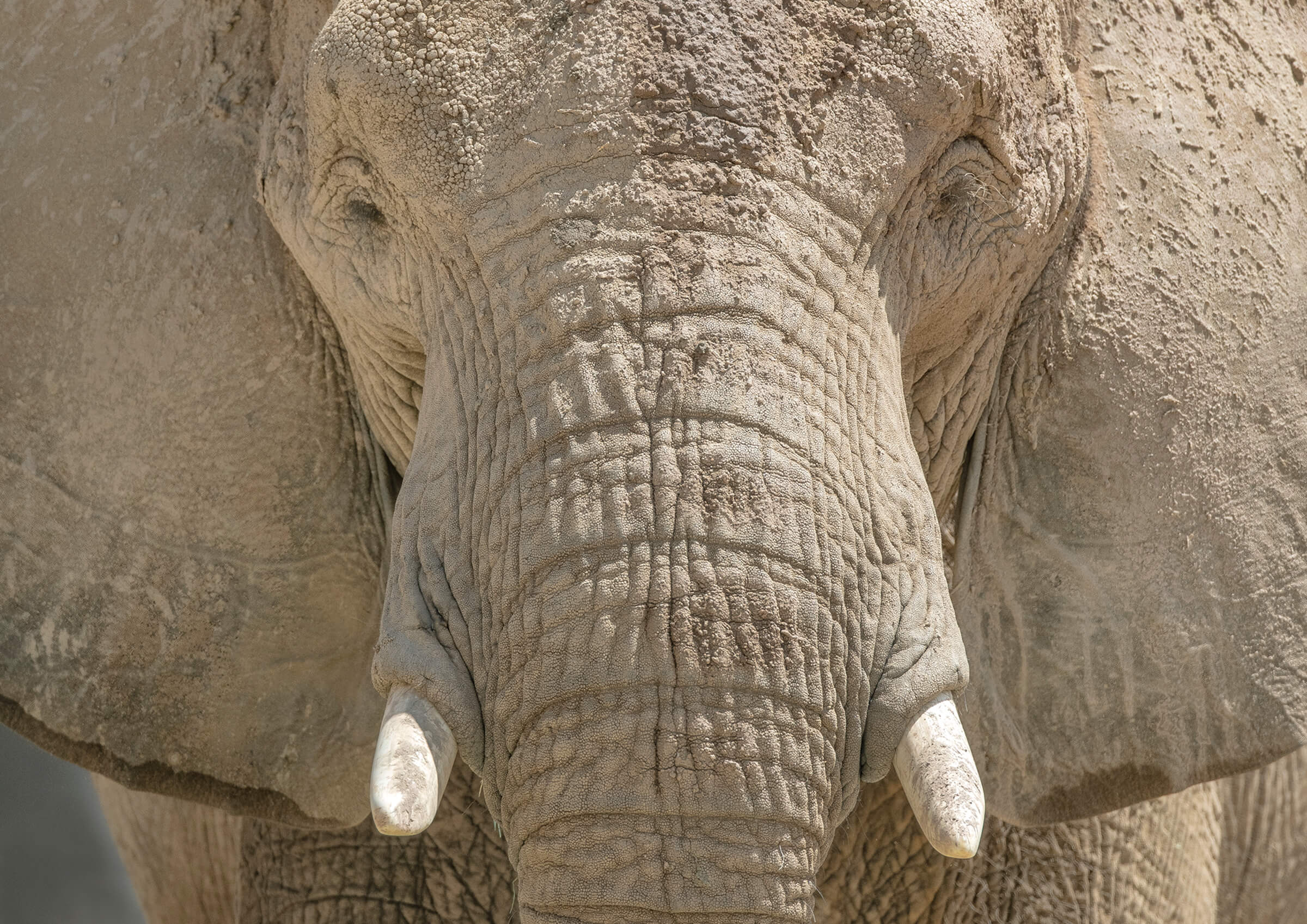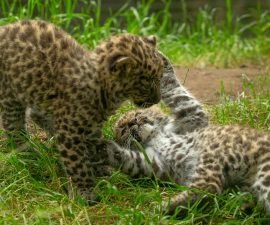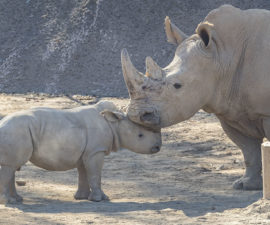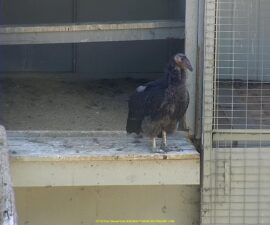BY Karen Worley
Photography by Ken Bohn
Say the word pachyderm, and what comes to mind? Probably an elephant—and that would be correct. But there are also other pachyderms. Rhinos, hippos, tapirs, and swine are part of this heavyweight category, as well. Some people would even include horses. Other than being fairly large animals, what do they have in common? They are all thick—thick-skinned, that is.

SKIN DEEP
Which mammals can be considered pachyderms? Clockwise starting at upper left: tapir, rhino, peccary, elephant, hippo.
The word pachyderm is from the Greek words pachys, meaning thick, and derma, meaning skin. It was in the late 1700s when naturalist Georges Cuvier used the term in a taxonomic way, to describe what he considered to be a group of related animals: they were all large bodied and had thick skin, in comparison to some other mammals. It was early days in the field of scientific categorization, so Cuvier could be forgiven for his analysis based on looks alone. He and other naturalists placed all these animals in one group, the Pachydermata, which remained a commonly used taxon for a couple of decades.
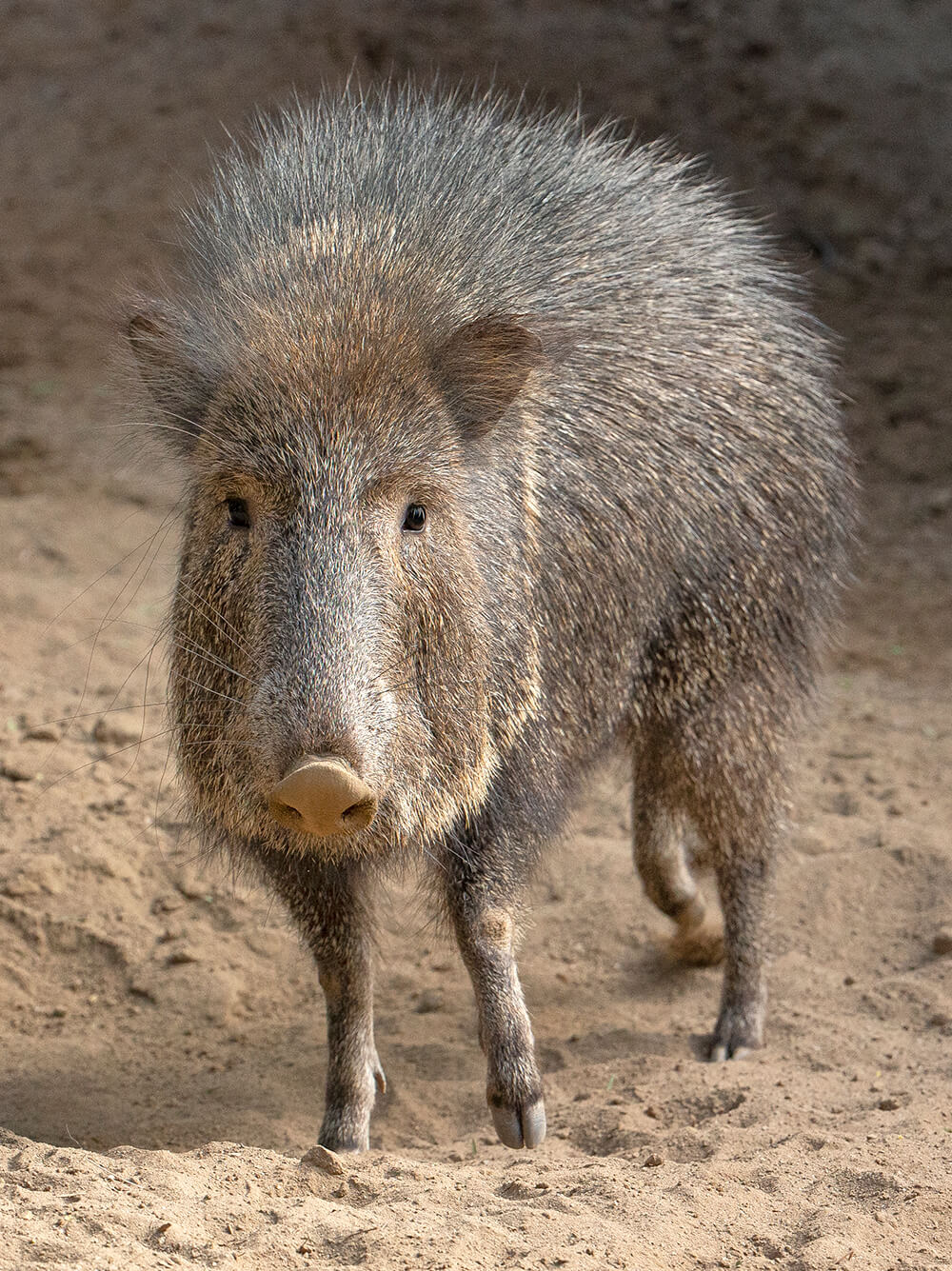
SAY WHAT? I’M A PACHYDERM?
Pigs and peccaries, like this Chacoan peccary, were originally included in the obsolete taxon Pachydermata.
Cuvier’s assessment might seem quaint in the light of today’s meticulous understanding of taxonomy. But in his day, he was a well-respected authority, one of the scientists credited with establishing comparative anatomy and paleontology as sciences. None of his colleagues seemed to doubt that Pachydermata was a proper class of mammals, and some thought that the walrus, dugong, and manatee should be included. The last three were referred to in several books of the time as “herbivorous pachyderms of the sea.”
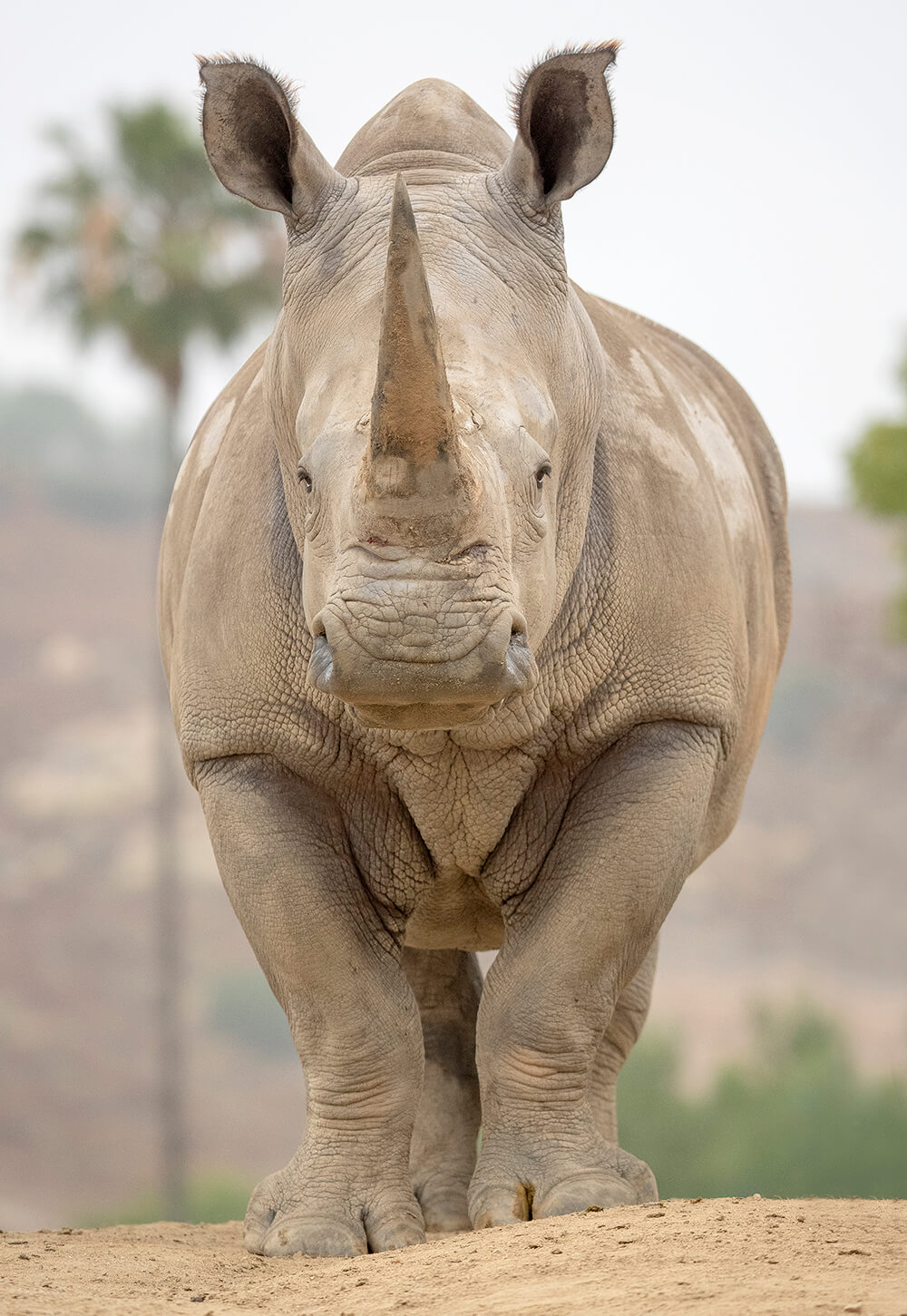
A NATURAL
It’s no big surprise that rhinos fit the definition of a pachyderm. Rhino skin can be up to two inches thick in some places.
In fact, affinity for water was an additional characteristic that Cuvier and his contemporaries used as evidence for the Pachydermata classification. All the species that they included in this group do live in or near water and are comfortable in it, either swimming, wading, or wallowing. Most, with the exception of horses and some wild swine, also share a lack of hair, having a sparse coat or barely any at all. When considered together, the thick skin, large body, aquatic ability, and relatively bare skin do seem like traits that could make these species relatives.
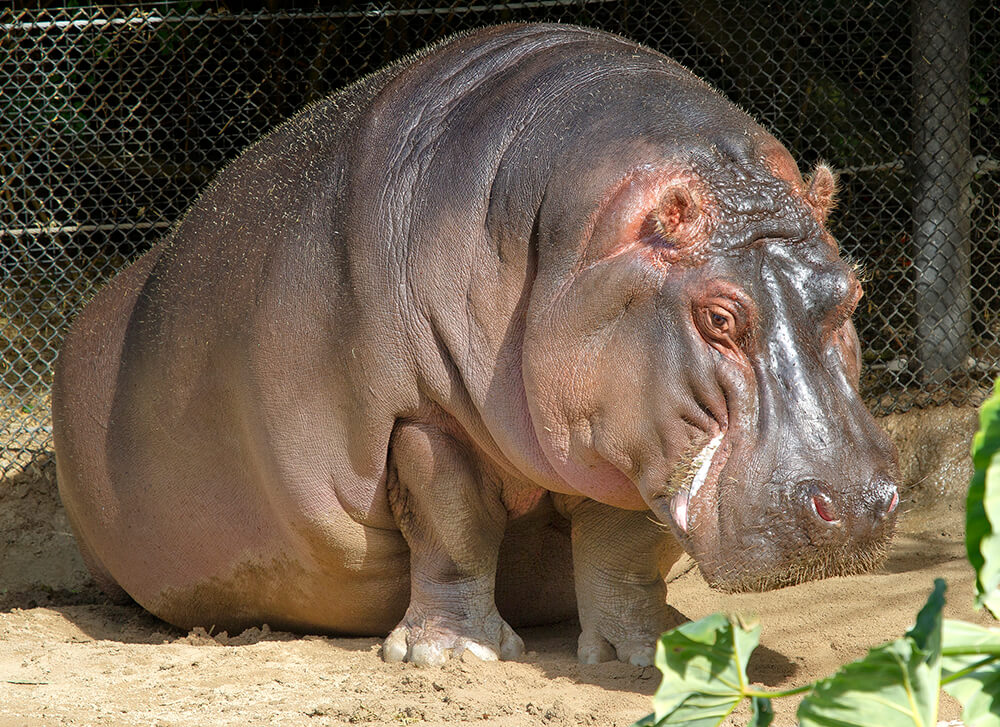
HIPPO HEFT
Hippos, too, have thick skin. It’s sensitive, though, which is one reason they spend the day in the water, and why they produce an oily substance from their pores as protection, like a sunscreen.
Now, scientists know that these mammals are not a family. As taxonomy progressed, it became clear that some of these animals were odd-toed ungulates (rhinos, tapirs, and horses) and some were even-toed ungulates (hippos, swine, and peccaries). Elephants were found to come from an ancient lineage not related to either. And sea mammals certainly had their own specialties. As a result, the Pachydermata classification was abandoned.
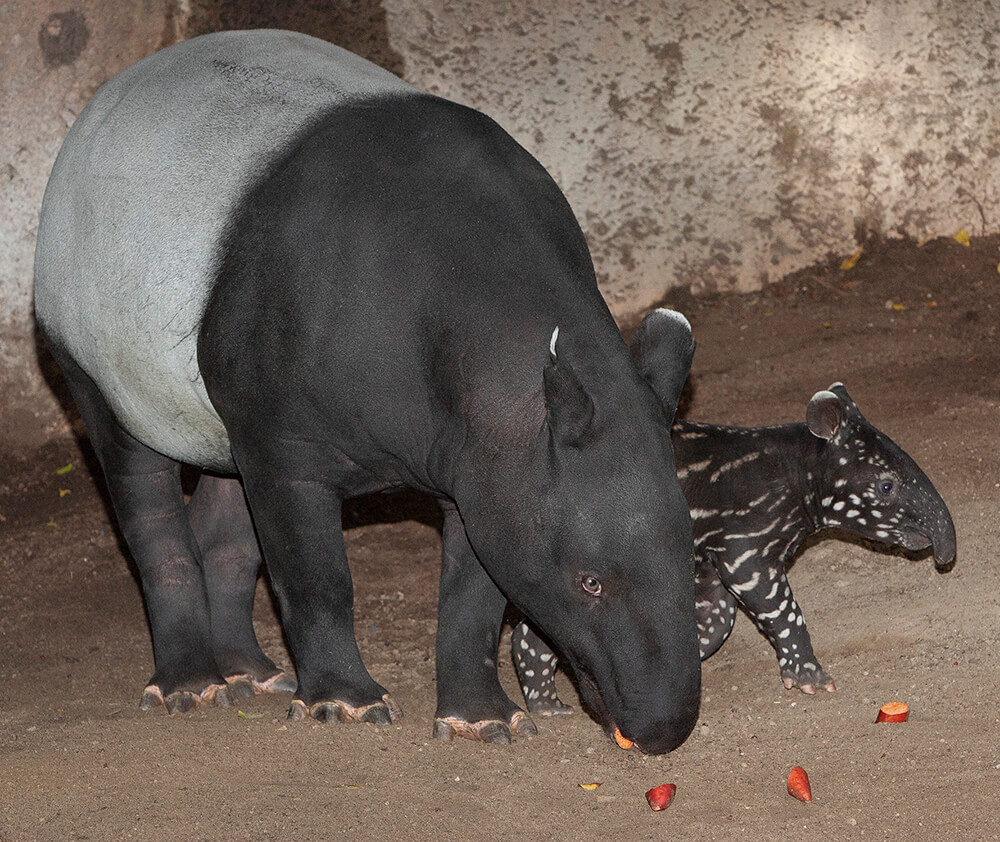
TAPIR TOUGH
To the casual observer, tapirs, like this Malayan tapir with her calf, do seem like they would fit right in to a family group with elephants, rhinos, hippos, and pigs. While they do share their taxonomic lineage with rhinos and horses, tapirs are in their own taxon.
But by then, the term pachyderm had been established in common use, and it continues to be used as a generalized word referring to animals with thick skin. These days, it is mostly used when referring to elephants, but it can still apply to hippos, rhinos, tapirs, and swine—just not in a scientific way. It’s a fun word with a long history that livens up a description of some well-known animals. Just keep in mind that you should have “thick skin” yourself if you use the word as an official scientific name around any taxonomists—they are sure to give you a tough time!

